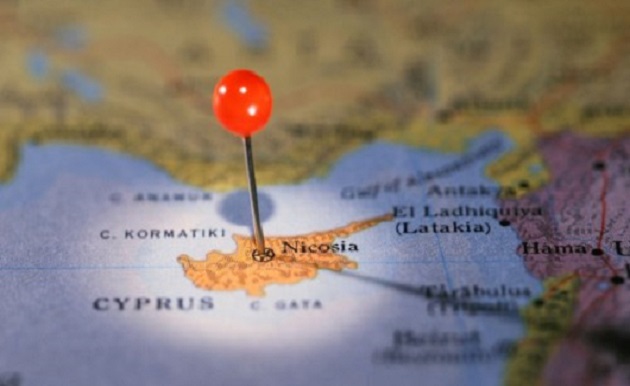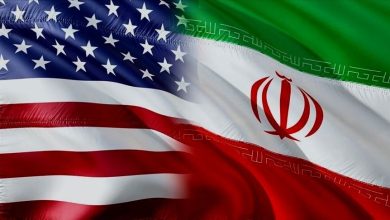An Analysis of EU’s Efforts for the Settlement of Cyprus Dispute

Cyprus dispute is a complex, long-lasting issue and It is regarded as one of the biggest diplomacy failures of international community (Fisher, 2001). EU was one of the actors try to play a role to settle the dispute especially by using membership as an incentive for actors to settle the dispute during 2000s (Asmussen, 2004). However, EU involved the dispute earlier when three guarantor states applied for European Economic Community (EEC) membership in 1960s. Especially the Colonial ties and economic interdependency to UK brought Cyprus into orbit of EEC. In that regard in 1973 EEC and Republic of Cyprus signed an association agreement to deepen the economic relations but this deteriorated the economic and political balance between two communities. In 1981 with the membership of Greece EU involved further to dispute. Again this development made the situation worse because of the asymmetry between actors resulting from membership (Müftücüler and Güney, 2005). However, EU’s role as a mediatory actor to settle the dispute started with the Republic of Cyprus (GCASC) application for the membership as the representative of whole island (Kyris, 2012). In this essay I will specifically analyze the role of EU in the settlement of Cyprus dispute.
The role of EU increased and transformed with the membership application of GCASC to EU in the 1990. In 1994 Greece vetoed the Commission suggestions regarding Custom Union between Turkey and EU. Later in 1995 Greece threatened using its veto power to prevent Turkish membership if EU wouldn’t lift the condition on the settlement of Cyprus dispute. So that Cyprus become a problem for Turkey’s membership and for enlargement policy of EU due to its decision making procedures (Yakinthou, 2009).
EU incorporate the Cyprus into 1997 enlargement and required the political settlement of dispute in line with UN parameters as a precondition until 1999 Helsinki summit. However due to Greece threats regarding veto the whole enlargement process EU couldn’t adopted a consistent and institutional approach regarding membership of Cyprus. Because at that time integration of Eastern European states was important for EU and EU couldn’t predict the relations between Turkey, Greece and Cyprus would make the situation more complex (Müftüler and Güney, 20005). In that regard EU had two strategies for settlement. Firstly, it could suspend the membership process of Cyprus until a solution reached and secondly it could continue to membership negotiation without a solution achieved (Oğuzlu, 2002). EU favoured second option and press to Turkey to motivate TRNC to compromise. This meant that EU ignored the role of GCASC and Greece in the escalation of conflict by holding responsible only Turkey and TRNC as uncompromised actors (Ulusoy, 2008).
In that regard EU approved the accession of GCASC and Turkey was the only state couldn’t reach that status in 1997. EU believed that this asymmetry would create incentives for Turkey to settle the dispute but it couldn’t help the solution of dispute instead GCASC increased its military buildup and Turkey and TRNC establish closer economic and political relations (Yakinthou, 2009). In this sense EU pursued a policy favoring Greece interests rather than approaching objectively.
Especially in 1999 Helsinki summit EU make inconsistent declarations regarding the condition for achieving a political settlement. In summit settlement of dispute assessed as an important goal for EU in the membership but EU lifted this conditionality but also promised to consider all the factors. As a result, Greece didn’t veto Turkey’s membership. However, this development decreased the leverage power of EU for GCASC to settle the dispute (Oğuzlu, 2002). Because they already know that they would be accepted as a member with or without the Turkish community. In 2003 council approved its membership with other nine candidates and Cyprus signed the Accession treaty in 2004. UN secretary general Kofi Annan saw this development as an opportunity to settle the dispute as a federal and unified island which is a member of EU under the name of Annan plan (Güney and Müftücüler, 2005).
Normally membership was an important incentive for the unification of island and it has a great potential to encourage all parties to settle the dispute because for Greek community with the membership they would guarantee their security and strengthen their status quo in the island since Turkey would end the “invasion” to not “invade” EU territories (Kyris, 2012). Also membership would bring them veto power against Turkey and Turkey could give concessions from Cyprus dispute in order to become an EU member. For Turkish community and Turkey EU membership could end the isolation and brought prosperity. In this regard EU undertake an important role by using conditionality principle and Carrot-stick policy especially on Turkey’s membership on TRNC via economic embargos (Yakinthou, 2009). However, in 2004 referendum the Greek community with a 75.83% rejected the Annan plan while Turkish community accepted it with 64.91% rate (Asmussen, 2004). Nevertheless, GCASC became a member to EU in 1 May 2004 and this development resulted with the failure of EU’s efforts to settle the dispute by using membership as a leverage power. Furthermore, involvement and failure of EU transformed the dispute into a further complex level (Ulusoy, 2008).
Normally, enlargement policy was represented as a peace and conflict resolution mechanism however EU’s involvement to dispute didn’t helped the efforts of UN, instead during that process it stimulate actors to adopt sharper positions and deadlock the solution efforts of UN (Eralp and Beriker, 2005). EU failed to achieve a solution because from the very beginning EU ignored the Greece and GCASC contributions to dispute by only holding responsible Turkey and Denktaş as uncompromising actors. That’s why EU only make press to Turkey and not press the Greece to convince the community leaders in island (Asmussen, 2004). EU could use its funds on Greece by cutting them if Greece didn’t motivate Greek community to settle they could have a leverage power against veto threats of Greece (Yakinthou, 2009). Also they misperceived that GCASC would support Annan Plan and ignored the Papadopoulos opposition since they only focus on Denktaş and Turkey’s oppositions (Asmussen, 2004). Also, EU’s arguments and position was close to Greece and Greek Cypriot because of the membership of Greece and its threats to blockade the whole enlargement with its veto power. In this sense decision making mechanism and lack of a consistent intuitional approach to Cyprus dispute played an important role in the failure (Yakinthou, 2009). EU could do better if it followed a more neutral, consistent institutional approach in Cyprus dispute. It didn’t approach as a 3rd neutral actor instead it manipulated by Greece. After GCASC’s accession leverage power of EU membership disappeared for a settlement. Because the balance of power shifted in favor of Greek community due to improper and asynchronous management of accession process by EU. Membership gave chance to GCASC to use EU as a tool against Turkish community and it became less motivated for future settlement efforts since status quo is in favor of itself. In this sense if EU followed a balanced accession process and use its “punitive and integrative policies” more efficiently to stimulate actors each actor will have equal incentives for a successful settlement (Eralp and Beriker, 2005). However, a possibility of a solution disappeared to a great extend with the low motivations of GCASC for settling the dispute. After referendum EU could recognize the TRNC de facto to increase motivation of GCASC’s for settlement but it didn’t (Asmussen, 2004). After all, skepticism against EU’s role as a mediatory power has increased after this failed attempt (Kyris, 2012).
To conclude EU had an important leverage power to encourage actors to settle the dispute. It involved into dispute from various aspects and its level of involvement and its importance as a mediatory power has changed throughout time. However, EU couldn’t lead the process in a neutral and synchronized way and its indecisive approach to Cyprus dispute and its involvement didn’t solve the dispute in fact it transformed it to a more complex level for future.
Buse Kulaksız
References
- Asmussen, J. (2004). Cyprus after the failure of the Annan-Plan.
- Eralp, D. U., & Beriker, N. (2005). Assessing the conflict resolution potential of the EU: The Cyprus conflict and accession negotiations. Security Dialogue, 36(2), 175-192.
- Fisher, R. J. (2001). Cyprus: The failure of mediation and the escalation of an identity-based conflict to an adversarial impasse. Journal of Peace Research, 38(3), 307-326.
- Kyris, G. (2012). The European Union and the Cyprus problem: a story of limited impetus. Eastern Journal of European Studies, 3(1), 87-99.
- Müftüler-Bac, M., & Güney, A. (2005). The European Union and the Cyprus Problem 1961–2003. Middle Eastern Studies, 41(2), 281-293.
- Oguzlu, H. T. (2002). The EU as an Actor in the Solution of the Cyprus Dispute: The Questions of How. JEMIE, i.
- Ulusoy, K. (2008). The Europeanization of Turkey and its impact on the Cyprus problem. Journal of Southern Europe and the Balkans, 10(3), 309-329.
- Yakinthou, C. (2009). The EU’s Role in the Cyprus Conflict: System Failure or Structural Metamorphosis?. Ethnopolitics, 8(3-4), 307-323.



